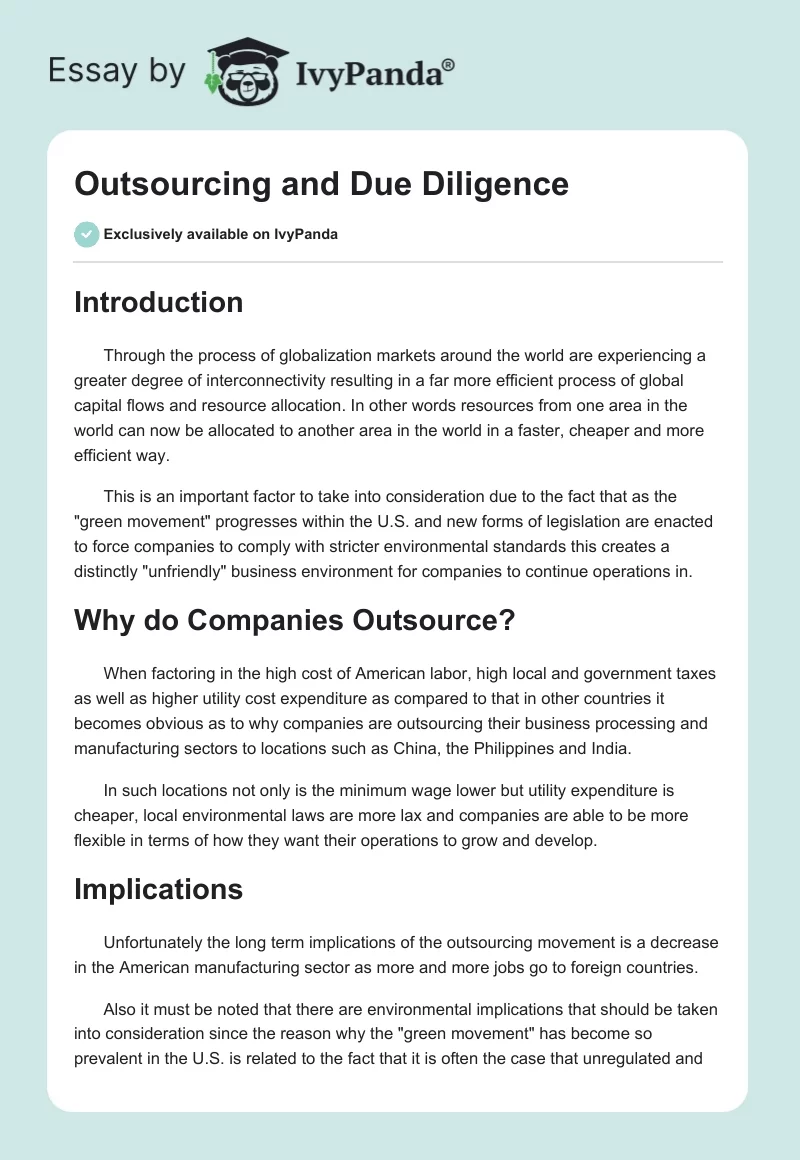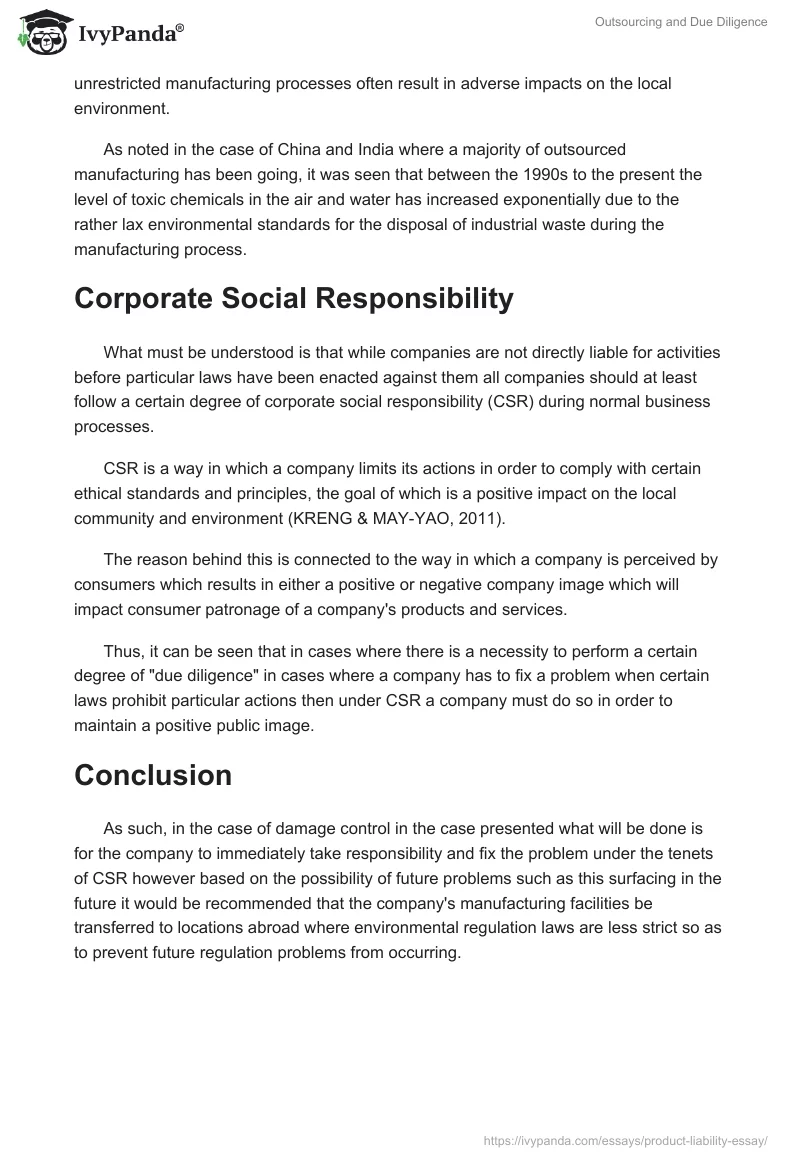Introduction
Through the process of globalization markets around the world are experiencing a greater degree of interconnectivity resulting in a far more efficient process of global capital flows and resource allocation. In other words resources from one area in the world can now be allocated to another area in the world in a faster, cheaper and more efficient way.
This is an important factor to take into consideration due to the fact that as the “green movement” progresses within the U.S. and new forms of legislation are enacted to force companies to comply with stricter environmental standards this creates a distinctly “unfriendly” business environment for companies to continue operations in.
Why do Companies Outsource?
When factoring in the high cost of American labor, high local and government taxes as well as higher utility cost expenditure as compared to that in other countries it becomes obvious as to why companies are outsourcing their business processing and manufacturing sectors to locations such as China, the Philippines and India.
In such locations not only is the minimum wage lower but utility expenditure is cheaper, local environmental laws are more lax and companies are able to be more flexible in terms of how they want their operations to grow and develop.
Implications
Unfortunately the long term implications of the outsourcing movement is a decrease in the American manufacturing sector as more and more jobs go to foreign countries.
Also it must be noted that there are environmental implications that should be taken into consideration since the reason why the “green movement” has become so prevalent in the U.S. is related to the fact that it is often the case that unregulated and unrestricted manufacturing processes often result in adverse impacts on the local environment.
As noted in the case of China and India where a majority of outsourced manufacturing has been going, it was seen that between the 1990s to the present the level of toxic chemicals in the air and water has increased exponentially due to the rather lax environmental standards for the disposal of industrial waste during the manufacturing process.
Corporate Social Responsibility
What must be understood is that while companies are not directly liable for activities before particular laws have been enacted against them all companies should at least follow a certain degree of corporate social responsibility (CSR) during normal business processes.
CSR is a way in which a company limits its actions in order to comply with certain ethical standards and principles, the goal of which is a positive impact on the local community and environment (KRENG & MAY-YAO, 2011).
The reason behind this is connected to the way in which a company is perceived by consumers which results in either a positive or negative company image which will impact consumer patronage of a company’s products and services.
Thus, it can be seen that in cases where there is a necessity to perform a certain degree of “due diligence” in cases where a company has to fix a problem when certain laws prohibit particular actions then under CSR a company must do so in order to maintain a positive public image.
Conclusion
As such, in the case of damage control in the case presented what will be done is for the company to immediately take responsibility and fix the problem under the tenets of CSR however based on the possibility of future problems such as this surfacing in the future it would be recommended that the company’s manufacturing facilities be transferred to locations abroad where environmental regulation laws are less strict so as to prevent future regulation problems from occurring.
Reference
Kreng, V. B., & May-Yao, H. (2011). Corporate Social Responsibility: Consumer Behavior, Corporate Strategy, And Public Policy. Social Behavior & Personality: An International Journal, 39(4), 529-541.


